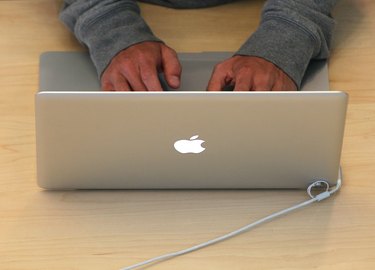
The terminal application included with Mac OS X can be used to block websites by editing the hosts file. By pointing a website address to an address that doesn't exist, the website becomes inaccessible. You can unblock websites that have been blocked this way by editing your hosts file. Unblocking websites by editing your hosts file only works if the websites were blocked in this manner. Some routers, networks and Wi-Fi hotspots block certain websites. There's no way to get around these blocks except by connecting to a different network on your MacBook.
Step 1
Click the "Finder" icon on the dock at the bottom of the screen.
Video of the Day
Step 2
Click "Applications" at the left side of the Finder window, double-click the "Utilities" folder and double-click "Terminal."
Step 3
Type "sudo nano /private/etc/hosts" into the terminal window and press "Enter" to open the hosts file in a terminal text editor.
Step 4
Use the arrow keys to locate the line referring to the blocked website in the text editor.
Step 5
Position the text cursor at the beginning of the line.
Step 6
Type a "#" character to comment out the line. The system ignores any lines in configuration files that begin with the "#" character.
Step 7
Press "Ctrl+O" and then press "Enter" to save the file.
Step 8
Press "Ctrl+X" to close Nano, then close the terminal window.
Video of the Day